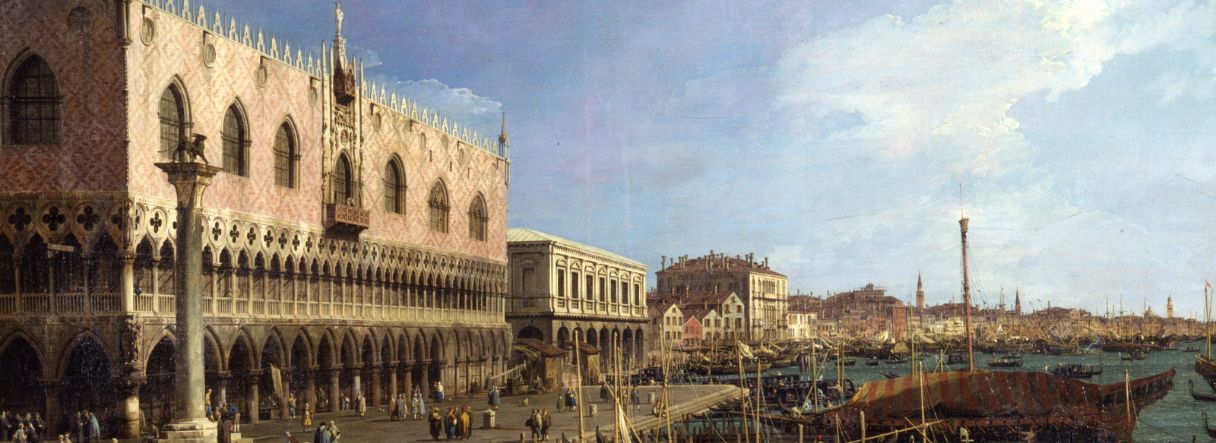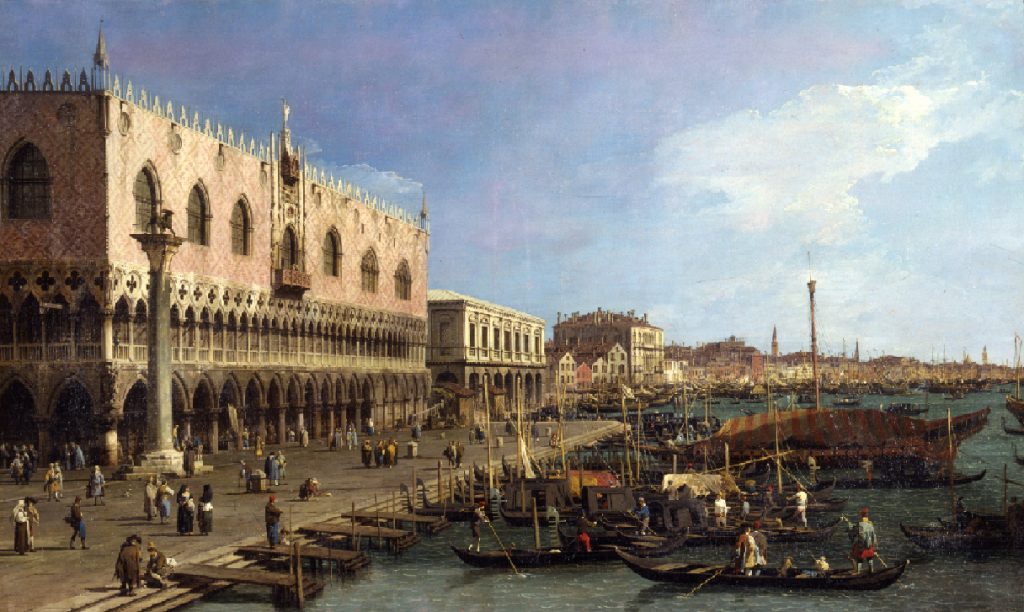
Venice, Doge’s Palace
Sala del Magistrato alle Leggi
From 27 March to 21 July, 2024
The Ospiti a Palazzo (Guests at the Palace) series of exhibitions will continue in 2024 with a public display of paintings that exalt the role of Venice and its major figures in European history and culture.
From 27 March, on display in the Sala del Magistrato alle Leggi, Palazzo Ducale, The Pier towards Riva degli Schiavoni with the Column of Saint Mark by Antonio Canal, known as Canaletto (Venice, 1697-1768).

To Canaletto’s maturity is linked the painting The Pier towards Riva degli Schiavoni with the Column of Saint Mark (1735-1740), in which the perspective coherence of the spatial layout, the precise rendering of the architecture and the quality of the crystalline light, evoking the atmospheric dust in the distance, best summarize the results of his production. Every element of the narrative is subordinated to the rendering of space, to the vastness of the vision, to the celebration of Venice, as a city rising from the waters and therefore capable of arousing amazement and wonder.
The painting proposes one of the most successful themes of Canaletto’s production, a luxury “souvenir” for the young aristocrats, especially English, who came to Venice during their Grand Tour. A pendant of a pair depicting opposite views of St. Mark’s Basin, the canvas was purchased by Thomas Osborne (1713-1789), 4th Duke of Leeds. The crystalline light characterizing the scene seems to be affected by the new theories introduced in Venice by Francesco Algarotti, a friend of Joseph Smith, who in 1737 published Il Newtonianismo per le Dame, ovvero dialoghi sopra la luce e i colori, disclosing the theories on light of the great English physicist.
_